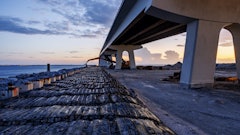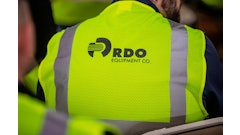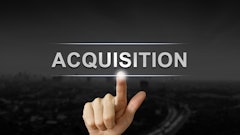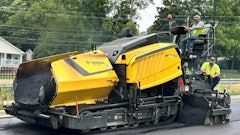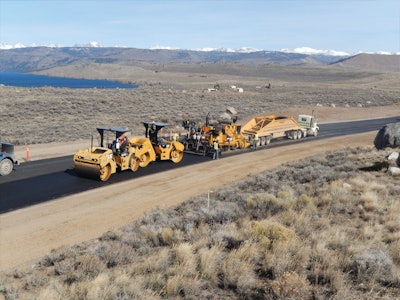
Mainline, production-paving contractors receive much of the industry’s attention. Yet there obviously is a need for small- and mid-sized contractors, too. They improve the local roads and provide niche services the larger contractors don’t.
The smaller contractors of course have the same demands regarding quality. This requires adherence to fundamentals and using state-of-the-art equipment that enable delivery of a high-quality product.
Teletractors Inc. of Pinedale, WY, is a smaller contractor that has found niches to fill. Pinedale, with a population of about 2,000, is about 90 miles south of Yellowstone National Park and is surrounded by three mountain ranges. It sits at an elevation of 7,100 feet and is in Sublette County, where approximately 80% of the land is public.
“We have to be diversified because we are in a small town,” says Lance Biffle, vice president of the company. “We handle all types of projects both large and small — underground utility work, general excavation, road work, sand and gravel sales, and asphalt sales/paving. We are becoming more specialized in aggregate sales and as an asphalt paving contractor.”
Teletractors recently took a step forward with its paving job on Fremont Lake Road in Sublette County, WY.
The project
Fremont Lake Road is one of the larger projects Teletractors has taken on as a general contractor. “It was also the biggest paving job,” Biffle says. Experience gained from other jobs made the step to the larger project manageable.
“We learned from previous work, as 2013 was our sixth year in the paving business,” Biffle says. “We started out paving parking lots and driveways, then moved on to city streets. A sizable county road project was the next goal, and Fremont Lake Road was it.”
The project called for paving 2.6 miles of the road, which has two 13-foot travel lanes and an accompanying 8-foot-wide bike path. The curvy road has steep grades and a 40 mph speed limit.
Placement of 14,000 tons was required, though poor weather meant only half of the bottom lift could be completed before winter arrived. The mix featured ¾” stone and 70-28 oil.
Paving
Belly dumps hauled the mix approximately 4 miles from the plant to the jobsite. The mix was about 325º F upon arrival, 300º F when placed and 280º F when compacted.
Challenging weather led to delivery and temperature adjustments. The cold temperatures required the mix to leave the plant hotter than normal, and to be dumped close to the pickup machine. The crew kept a close watch on plant output, paving speed and the trucks’ cycle time to ensure mix was hot when delivered. The cold fall weather heightened segregation concerns, so extra attention was given to proper loading at the plant. On the jobsite, a windrow elevator also helped prevent segregation.
“We like the idea of using a windrow elevator so continuous paving can be achieved,” Biffle says. “Windrow elevator paving also eliminates end-dump truck exchanges and the risks of a truck rolling away when negotiating up and down hills that were encountered on the job.”
The Cat AP555E Asphalt Paver with AS2252C Screed handled the paving work. Plans call for placing two lifts of asphalt over the 2.6 miles. A 2-inch base lift was placed in late fall, with a 2-inch surface lift scheduled to be placed in spring when warmer weather returns.
The paver moved at a pace of about 20 fpm based on plant output of 160-180 tons per hour. Joints were tacked and then placed with around 1/2 in. of overlap.
Compaction
Teletractors adjusted to the cold temperatures by using two Cat CB54 tandem vibratory rollers in breakdown mode. The rollers ran side-by-side, with each completing five vibratory passes. A smaller finish roller made two or three static passes.
“We had to stay really close to the paver because of the cold temperatures,” Biffle says. Breakdown compaction occurred at about 280º F, while the mat temperature was about 200º F during finish compaction.
Longitudinal joints were compacted by making the first vibe pass about 1 ft. inside the joint and all other passes on the joint. Transverse joints were compacted using a smaller roller that ran side-to-side on the joint. The work was checked with a straight edge.
Fundamentals pay off
The work, started late due to circumstances beyond Teletractors’ control, went well despite the onset of cold weather.
Biffle believes the commitment to fundamentals was crucial given the quickly cooling weather. Enrollment in Cat Paving Operations Training the previous winter paid dividends when it was time to pave the road. The training focuses on segregation prevention techniques such as proper head of material, auger utilization, proper dumping and continuous movement.
“Last winter, three of us went to the training in Florida,” Biffle says. “ It really helped us with the fundamentals of paving and gave us the confidence to take on bigger projects. It was also a great way for us to familiarize ourselves with our new Cat paver before taking it out on the job.”
Sticking to fundamentals worked, with a quality mat produced in challenging conditions.



![Lee Boy Facility 2025 17 Use[16]](https://img.forconstructionpros.com/mindful/acbm/workspaces/default/uploads/2025/09/leeboy-facility-2025-17-use16.AbONDzEzbV.jpg?auto=format%2Ccompress&fit=crop&h=100&q=70&w=100)
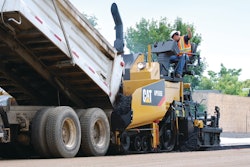


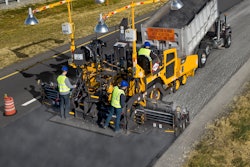



![Lee Boy Facility 2025 17 Use[16]](https://img.forconstructionpros.com/mindful/acbm/workspaces/default/uploads/2025/09/leeboy-facility-2025-17-use16.AbONDzEzbV.jpg?ar=16%3A9&auto=format%2Ccompress&fit=crop&h=135&q=70&w=240)
